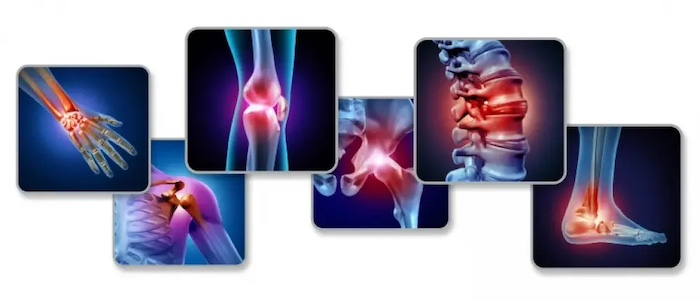
Patellar tendinopathy (jumper’s knee)
Patellar tendinopathy (PT) is “jumper’s knee,” a clinical and chronic overuse condition of unknown pathogenesis and etiology. A large proportion of patients are refractory to conservative treatment, and a variety of new therapies have emerged, including PRP injections. PRP-containing growth factors have been shown to play a role in tendon healing. The growth factors in PRP have been observed to play crucial roles in the tissue healing process, collagen production, and tendon cell proliferation.
To compare PRP with focused ESWT among athletes with chronic PT, a randomized controlled single-center trial with 12 months of follow-up was performed. During the 12-month follow-up period, the Victorian Institute of Sport Assessment-Patella questionnaire scores for both groups improved significantly from baseline (55.3 for PRP, 56.1 for ESWT). However, the PRP group showed greater improvement at 6 months (86.7 vs. 73.7, p=0.014) and 12 months (91.3 vs. 77.6, p=0.026). The pain scores during five single-leg squats demonstrated similar trends. At 12 months, a greater proportion of patients in the PRP group rated their response to treatment as good or excellent (PRP, 91.3% vs. ESWT, 60.8%; p=0.035).
Therefore, PRP plays a potential role in the treatment of PT, leading to a significant decrease in pain and significant improvement in knee function and quality of life over 12 months.
Rotator cuff tendinopathy
More than 50% of all shoulder pain cases are considered to be related to tendinopathies of the rotator cuff (RC), such as tendinosis and incomplete thickness tears of the supraspinatus. In the management of RC tendinopathy, physical rehabilitation, rest, and nonsteroidal anti-inflammatory drugs are considered conventional treatments; however, the best treatment is still inconclusive.
PRP has been reported to promote the proliferation of two tendon cell types; tenocytes and tendon stem/progenitor cells. Several studies have shown that PRP can induce tenocyte proliferation in vitro.
For patients with RC tendinopathy, corticosteroids yield pain reduction and functional improvement in the short term (3–6 weeks), but not in the long term (over 24 weeks). In contrast, PRP may yield better long-term outcomes (more than 24 weeks).
Moreover, the long-term retear rates of RC-related abnormalities were significantly decreased in patients who received PRP.
Many systematic reviews and meta-analyses have found that the currently available clinical evidence on PRP injections supports a beneficial effect on pain reduction and functional outcomes in RC tendinopathy.
Adhesive capsulitis
Adhesive capsulitis (AC) of the shoulder is a common clinical condition characterized by insidious and progressive pain resulting in loss of glenohumeral joint function. However, the etiology of AC remains unclear. It has been postulated that the motion limitations of the shoulder joint are due to an imbalance between fibrosis and loss of normal collagenous remodeling after an inflammatory healing response.
PRP can exert an anti-inflammatory effect at the inflammation site by releasing TNF-α, HGF, and lipoxin A4, which are potent anti-inflammatory agents.
At the 12-week follow-up in another study, a single injection of PRP was found to be more effective than corticosteroid injection in improving pain, disability, and shoulder range of movement in patients with AC.
PRP injections are effective in reducing pain and improving shoulder joint function due to AC. These findings suggest that PRP is a therapeutic option for the management of AC.
Adverse effects
The most common adverse effect was mild pain and discomfort at the injection site after PRP injection. Some authors have reported that PRP injections are more painful than saline injections. However, no serious adverse effects were observed.
Limitations
Although good clinical outcomes and safety profiles can be achieved with the use of PRP, there are discrepancies in the existing literature. Several variables must be considered when using PRP. However, these variables were not described herein. PRP preparation methods, types of activators, types of pathology to be treated, routes and times of administration, and the association of PRP with other treatments can influence outcomes. Although several research articles have been published on PRP, this field still requires more scrutiny because of the inconsistent results of different studies, and a definite direction remains elusive.
Precision Pain Care and Rehabilitation has two convenient locations in Richmond Hill – Queens, and New Hyde Park – Long Island. Call the Queens office at (718) 215-1888 or (516) 419-4480 for the Long Island office to arrange an appointment with our Interventional Pain Management Specialists, Dr. Jeffrey Chacko or Dr. Sonny Ahluwalia.















